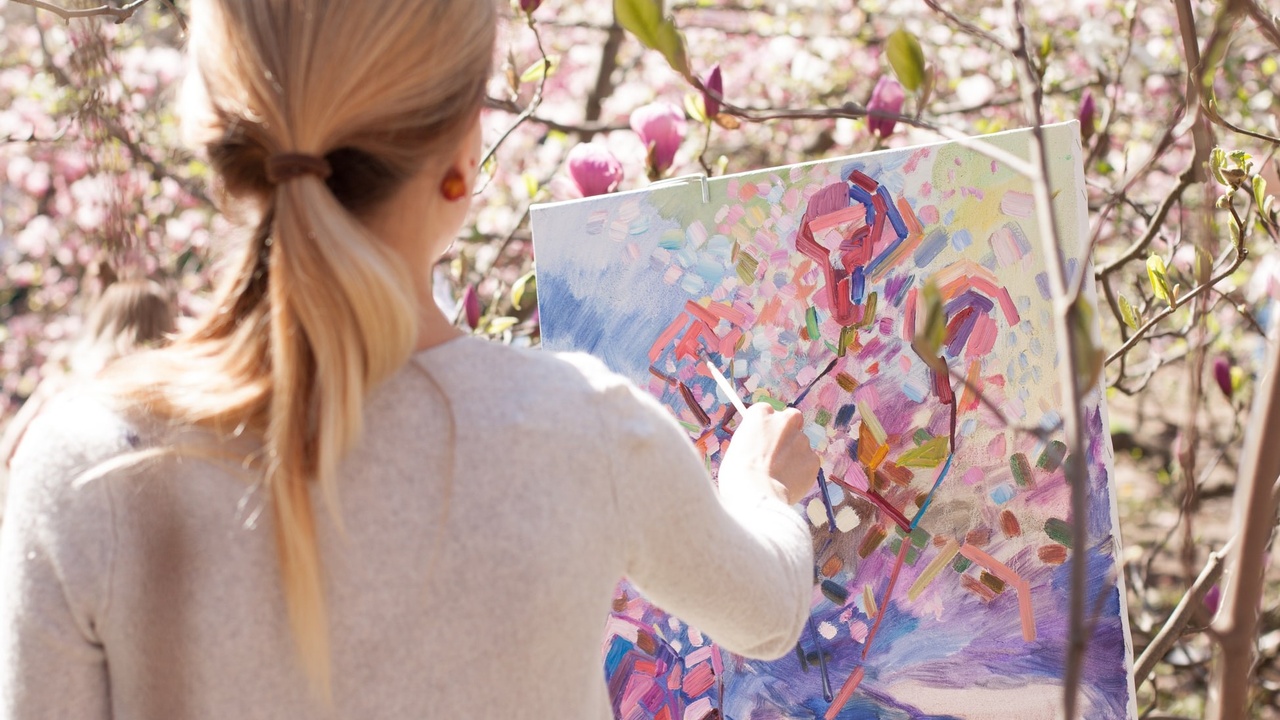Pro Painting Tip: Analyze Your Paintings Over Time

As humans we have a difficult time noticing gradual change. As such it can be hard to feel like you’re making any progress. But, if you take a step back and look at your paintings over the course of time, you’ll find that you’ve come a long way. This will help encourage you for the journey ahead! If you’re a beginner, keep this in mind for when you’ve completed a few paintings. You might find yourself improving faster than you thought!

“Every artist was first an amateur.” – Ralph Waldo Emerson
Rooftop Spill
House painting was the first real job I had. I remember being sixteen and on the roof of a house. I had a gallon of paint and a paint brush, and I was trying not to fall off. I don’t remember how it happened, but suddenly I tipped my can and spilled a whole bunch of light green paint on the black roof shingles. So, there I was, trying to discreetly clean off the roof before my boss (or worse, the owner of the house) saw, and a small task that should have taken ten minutes ballooned into an hour-long episode.
Slow Transformation
Amazingly, I made it through that first job and first summer. I got better at what I did. I learned the tricks of the house painting trade over the next few summers. Eventually I became a crew leader. Later, I owned my own house painting business and worked in multi-million-dollar homes. What happened? How did that kid spilling paint turn into someone who would be sought out for custom work? One of the biggest factors was simply this: time.
We Need Perspective
The problem is, when we get stuck in the moment and lose perspective, it can feel like we aren’t making progress. When I was up on that rooftop trying to clean up the paint I’d spilled, I felt horrible. I felt like a complete failure. What I didn’t know was that I was learning a valuable lesson right then. I was learning that you never should try to paint out of a full gallon. It is too easy to spill. Instead, you should pour a small amount of paint into another empty can to paint.

Growth Encourages Growth
When I think back to that first summer of house painting, it’s easy for me to see how I’ve grown. I might not be using those skills anymore, but I haven’t forgotten them. It’s the same thing with art. When I look back at my early paintings, I can say with confidence, “Yes, I’ve grown since I started!” When we know we are growing, it gives us encouragement to keep taking steps forward. Each step forward helps us grow in confidence as we claim new territory and gain new knowledge and skills.
Where Did You Start?
If you are feeling stuck or discouraged, this is what I recommend. Go back and look at your work from the beginning. Look for all the ways you’ve made progress. Where do your new paintings succeed where an older version wasn’t quite there? Do you know yourself better as an artist and thus feel more confident in your own style? Can you remember back to when you were hesitant to paint in front of people? Have you changed mediums and discovered one you absolutely love? Do you understand value better? Do you understand how to use any tools of the trade better since you first started? Have you improved any painting techniques?
Looking Back
Through comparison with older work, you’ll be able to identify patterns of strengths to embellish and weaknesses to improve upon. Sometimes it’s difficult to see that we are progressing at all, and that is when a look back can be most helpful. We will find encouragement in the fact we have grown. The trick is not to compare your work too often, or you might not be able to see change. I’d recommend painting for a few months at least before you do any real comparing. But how should we compare? Do you remember the rules of positive critique? This is a great time to apply them. Always ask yourself what you love about those earlier paintings? Sometimes that will be a lot and sometimes just one or two things. Even if it was just the subject matter, there’s still something good about them. Don’t forget, too, that those old paintings – even if you think they were failures – represent your progress as an artist, and they are valuable because of that. Like my painting-on-the-roof incident, you may simply have learned something not to do. The thing to remember is each lesson you learn is big.
Old Painting, New Inspiration
Sometimes when you look back at older work, you might even find a painting you want to work on again. Robert Genn, my instructor I mentioned earlier, used to have a storage shed on his property where he kept his “not-quite-there-yet” paintings. Over time, he had hundreds, and when he was looking for his next project, he would occasionally visit that shed and pull out one of his older paintings to work on. Many of them were eventually transformed into great paintings that ended up in collectors’ homes. When we get some distance from our paintings, it often helps us see them in a new light, and we can make better decisions because of that. So, a couple thoughts for if you do decide to work on an older painting. First, make sure you photograph your painting before you start so you can then compare the updated version to the old one and see which you prefer and why. Second, remember there is no failure here. Every time you paint, you will be learning. Even if your new painting turns out worse than the original, that’s okay. You just learned some things, which means you grew, and that is a great success.
Consistency Is Still Key
It’s also important to know that looking back at old paintings will only reveal growth if you are putting in consistent effort. If you don’t paint for an extended amount of time, don’t be surprised if, when you pick up the paint brushes again, it feels like you’ve regressed. It’s just like anything. You’ve gotten a bit rusty, but that doesn’t mean you lost your skills or abilities. You just need to get back in the groove.
Another Reason to Look Back
What if you have been painting consistently and are in a rut? Well, looking back at older paintings can be helpful in this case as it can help remind you what you have done well in the past. Go back and find a painting you did that you love. Ask yourself what was great about it and try to emulate the techniques you used to create that painting. Was it the composition, lighting, color palette choice, or subject matter? Can you incorporate something you love from an old painting into a new work? I have a few of my early paintings in our house. Sometimes I look at them and think, “How did I do that?” There is a freshness and freedom that I love, and it’s helpful for me to see them because they remind me to paint with liberty and not take myself too seriously. Sometimes they give me ideas that I can incorporate into new works.

This is one of my early paintings that I still really like!
Growth & Love
There will always be things that can be improved upon, but looking back at old paintings can certainly inspire us and help us break out of ruts. Sometimes it’s by showing us how we’ve grown, and sometimes it’s by showing us what we love and have done well. If you feel stuck, go back and look at some of your previous paintings. Figure out what you love about them. See where you’ve grown. Let those older paintings motivate you because as you continue to work, you will continue to grow. Who knows where you’ll be in another six months.
“By working hard, old man, I hope to make something good one day. I haven’t yet, but I am pursuing it and fighting for it.” - Vincent van Gogh




